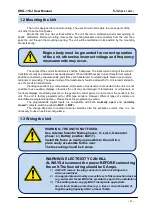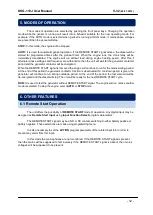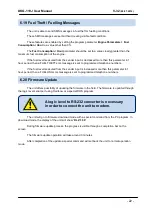
DKG-119J User Manual V-32
(09.07.2012)
- 10 -
Alarms indicate an abnormal situation in the generating set are divided into 3 priority levels:
1-
ALARMS:
These are the most important fault conditions and cause:
-
The
ALARM
led to be on steadily,
-
The genset contactor to be released immediately,
-
The engine to be stopped immediately,
-
The
Horn
,
Alarm
,
Alarm+Load_dump
and
Alarm+LoWarning
digital
outputs to operate, (if selected via programming menu)
2-
LOAD_DUMPS:
These fault conditions cause:
-
The ALARM led to flash,
-
The genset contactor to be released immediately,
-
The engine to be stopped after Cooldown period,
-
The
Horn
,
Alarm+Load_dump
and
Alarm+LoWarning
digital outputs to
operate, (if selected via programming menu)
3-
WARNINGS:
These conditions cause:
-
The WARNING led to be on steadily,
-
The
Horn
and
Alarm+LoWarning
digital outputs to operate, (if selected
via programming menu)
If the ALARM MUTE button is long pressed, the Horn output will be deactivated; however
the existing alarms will persist and disable the operation of the genset.
Alarms operate in a first occurring basis:
-If an alarm is present, following alarms, load_dumps and warnings will not be accepted,
-If a load_dump is present, following load_dumps and warnings will not be accepted,
-If a warning is present, following warnings will not be accepted.
Alarms may be of LATCHING type following programming. For latching alarms, even if the alarm
condition is removed, the alarms will stay on and disable the operation of the genset. The existing
alarms
may be canceled
by pressing one of the operating mode buttons (
TEST / OFF / AUTO
).
Most of the alarms have programmable trip levels. See the programming chapter for adjustable
alarm limits.
4. ALARMS AND WARNINGS











































